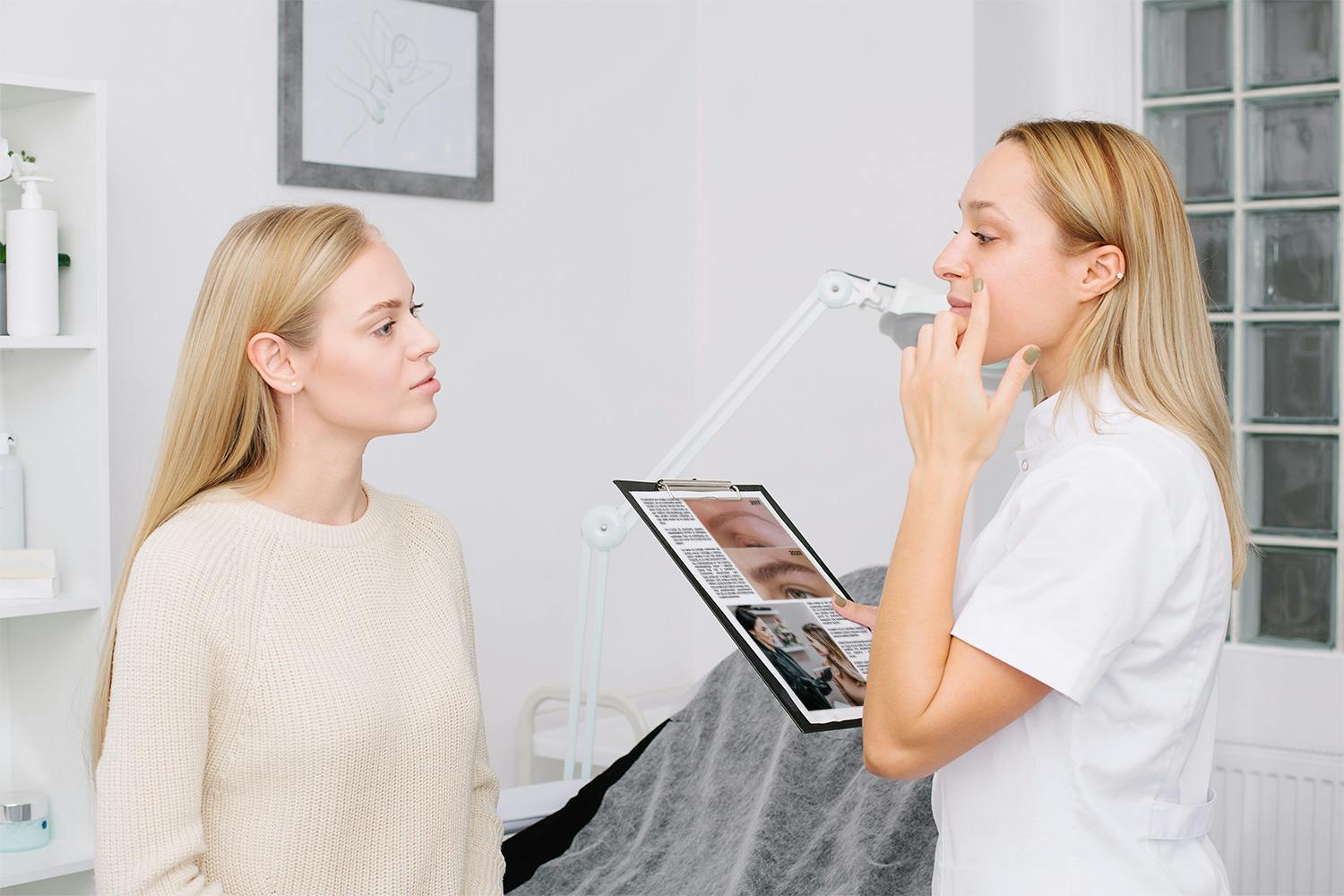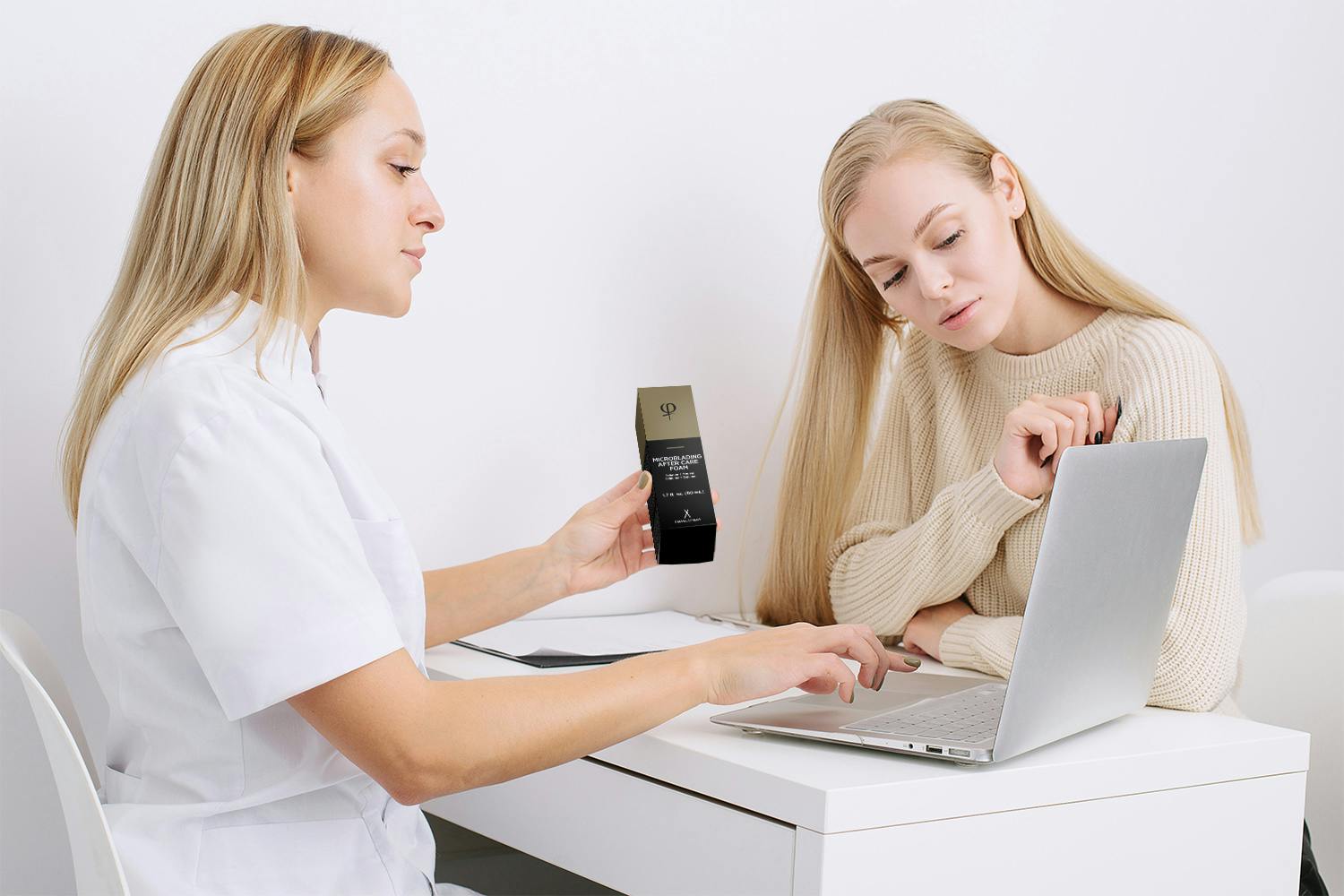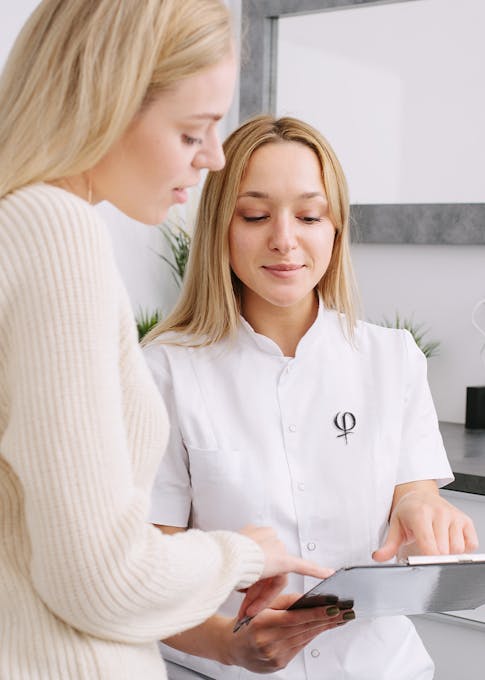Typically, artists look at pre-procedure consultation as a preliminary formality. A client asks a couple of questions, the artist answers and that’s it. But it’s not - at all.
Did you know that during a consultation, the clients will either fall in love with you or they’ll walk away? Pre-procedure is your chance not only to inform the client but to convince them that they’ve made the right decision by choosing you.
The pre-procedure consultation is the linchpin that holds the client-artist relationship together. It's the moment to manage expectations, answer questions, build rapport, and prepare the client for what's to come.
Set your consultation goals
There are a couple of goals that are universal for any client coming to consult with you. After each pre-procedure talk, you should:
- Be familiar with their health issues and allergies
Their previous health issues will affect the aftercare treatment and products that you’ll recommend to them.
- Get to know the skin type and tone.
The skin type and tone will determine the pigment you are using, as well as the aftercare products. For example, a person with oily skin is prone to have microblading strokes fade or blur.
Since choosing the right microblading pigment is not just related to matching it with the client’s hair color, but also the skin tones and undertones, as well as the eye color.
- Break your clients’ misconceptions.
A huge portion of your clients will not be educated about microblading and permanent makeup in general. Your task is not only to answer their questions but also to find out what their beliefs are and make sure their thoughts are not misleading.
We previously wrote about the most common microblading myths, such as that microblading is the same as tattooing, or that microblading is painful. Take a look at it and learn how you can break these myths with your clients - Microblading: Myths VS Facts.
- Earn your client’s trust.
By answering their queries and finding out more about their objections, you’ll ensure your client’s comfort, safety, and satisfaction with the process.
Tip: Microblading courses at PhiAcademy have modules dedicated to artist-client relationships, which cover actionable steps for achieving the most efficient pre-procedure talk. As well as the skin and color theory, which will allow you to deeply understand how each skin type needs to be treated.
You can find your nearby courses here.

There are a couple of goals that are universal for any client coming to consult with you.
Here’s a test to check your listening skills
To achieve your goals - you need to be an active listener.
And being an active listener doesn’t mean that you are just listening, but that you understand your clients, and that you read between the lines.
Did you know that roughly only 25% of people remember what you said after the conversation? This means that only 25% of us are active listeners, and most of us are overrating our listening skills.
Here’s a self-assessment that will help you determine if you fall under this 25% of people.
After each question, choose the answer (a, b, or c) that is the most accurate reflection of your usual behavior.
Question 1: When someone is talking to you about an issue they are facing, you:
a. Give advice or solutions before they've finished speaking.
b. Let them finish, but are thinking of your response while they're speaking.
c. Wait until they've fully expressed their thoughts and feelings, then ask clarifying questions
Question 2: If someone is talking to you while your phone vibrates, you:
a. Check the notification immediately.
b. Wait until they finish speaking, then check your phone.
c. Ignore the vibration until the conversation is over.
Question 3: When involved in a conversation, you:
a. Are often thinking of other things while the other person is speaking.
b. Are focused on the conversation, but your mind occasionally wanders.
c. Concentrate fully on the speaker, letting go of other thoughts.
Question 4: When someone is speaking to you, you:
a. Occasionally interrupt to get your point across.
b. Wait for your turn but sometimes get impatient.
c. Listen patiently without interrupting, giving them all the time they need.
Question 5: During a conversation, you:
a. Primarily pay attention to the words being said.
b. Try to notice the speaker's body language but sometimes forget.
c. Carefully observe the speaker's body language and tone of voice, as well as their words.
Question 6: When someone shares a different perspective, you:
a. Immediately start crafting counter-arguments in your head.
b. Consider their viewpoint, but are mostly convinced by your own.
c. Try to understand their perspective and consider its merits before responding.

There are a couple of goals that are universal for any client coming to consult with you.
Scoring Scheme:
For each question, give yourself 1 point for each (a) answer, 2 points for each (b) answer, and 3 points for each (c) answer.
Results:
6-9: You may need to work on your active listening skills. Try to be more patient, open-minded, and focused during conversations.
10-14: You have some good active listening habits, but there's room for improvement. Keep working on focusing your attention and withholding judgment.
15-18: Excellent! You're a great active listener. Continue honing your skills and setting a positive example for others.
Tips for improving your active listening skills and making your consultation even more effective
- Be fully present.
Give the speaker your undivided attention. This means putting away your phone, closing your laptop, and focusing on the speaker. Avoid multitasking during a conversation.
- Nod your head.
Non-verbal communication has a great effect on your pre-procedure talk. Make sure that you are nodding your head, and non-verbally showing that you are listening.
- Wait to respond.
Don’t be crafting a response in your head while your client is speaking. Wait for them to finish and then start thinking about your response.
- Empathize.
Try to understand your client’s feelings, emotions, and perspective. Respond with empathy, showing you understand their point of view, even if you don't agree with it.
- Practice Patience.
Good listening takes time. It's about being patient, giving the client ample time to express themselves without feeling rushed.

By answering their queries and finding out more about their objections, you’ll ensure your client’s comfort, safety, and satisfaction with the process.
Pre-procedure talk is an integral part of the microblading treatment.
It’s a unique chance for you to build rapport and trust with your clients, as well as to prepare a personalized approach. Once you master the skill of active listening and achieve your goals with every pre-procedure consultation, your expertise, and the waiting line will undoubtedly grow.
Do you have any additional insights on conducting effective microblading consultations, or are there aspects you're still curious about? Feel free to share your thoughts and questions in the comments below.


Join the discussion